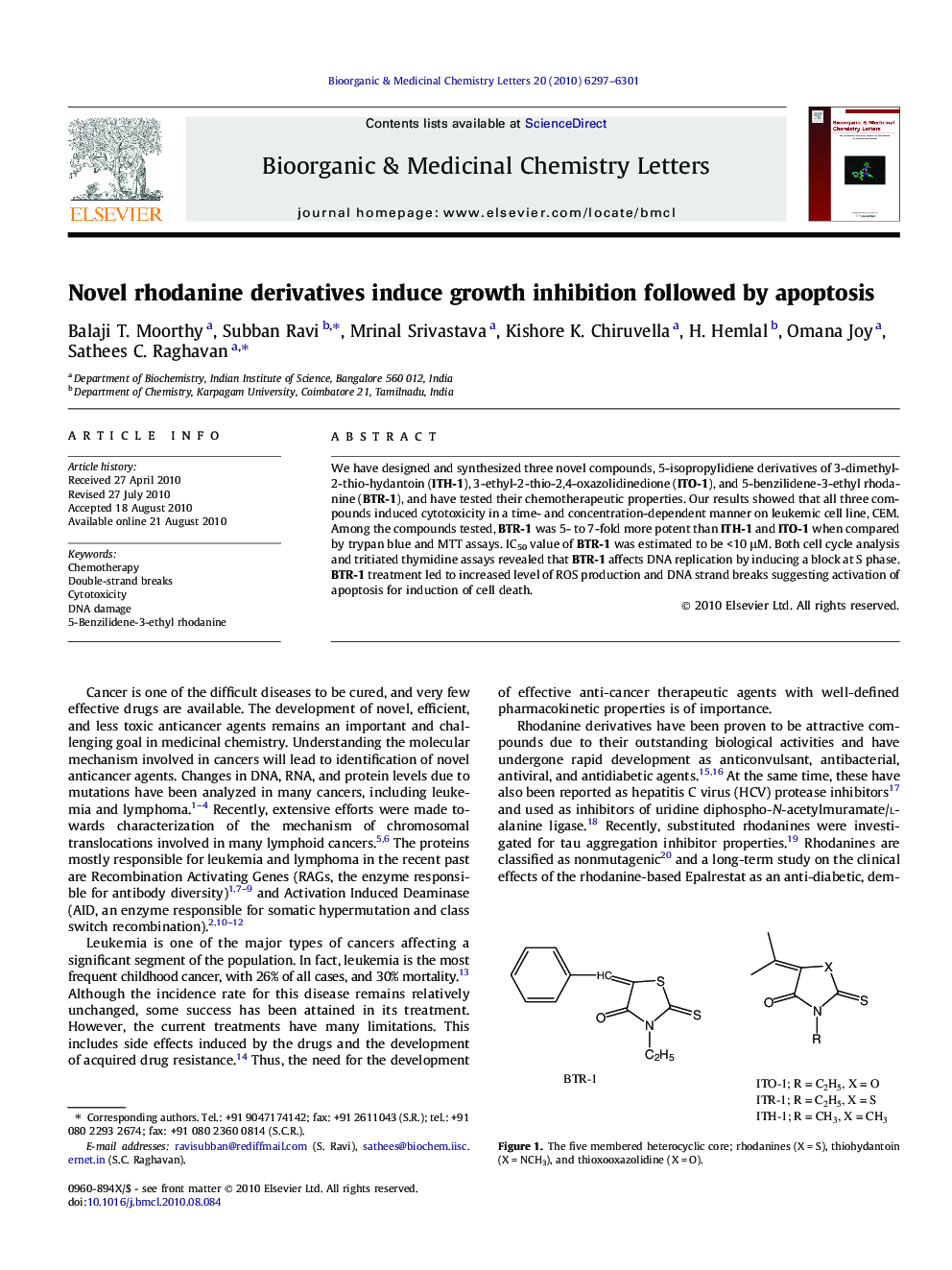| Article ID | Journal | Published Year | Pages | File Type |
|---|---|---|---|---|
| 1373540 | Bioorganic & Medicinal Chemistry Letters | 2010 | 5 Pages |
We have designed and synthesized three novel compounds, 5-isopropylidiene derivatives of 3-dimethyl-2-thio-hydantoin (ITH-1), 3-ethyl-2-thio-2,4-oxazolidinedione (ITO-1), and 5-benzilidene-3-ethyl rhodanine (BTR-1), and have tested their chemotherapeutic properties. Our results showed that all three compounds induced cytotoxicity in a time- and concentration-dependent manner on leukemic cell line, CEM. Among the compounds tested, BTR-1 was 5- to 7-fold more potent than ITH-1 and ITO-1 when compared by trypan blue and MTT assays. IC50 value of BTR-1 was estimated to be <10 μM. Both cell cycle analysis and tritiated thymidine assays revealed that BTR-1 affects DNA replication by inducing a block at S phase. BTR-1 treatment led to increased level of ROS production and DNA strand breaks suggesting activation of apoptosis for induction of cell death.
Graphical abstractWe have designed and synthesized three novel compounds, 5-isopropylidiene derivatives of 3-dimethyl-2-thiohydantoin (ITH-1), 3-ethyl-2-thio-2,4-oxazolidinedione (ITO-1), and 5-benzilidene-3-ethyl rhodanine (BTR-1), and have tested their chemotherapeutic properties using different assays. We find that among the three compounds, BTR-1 is most potent.Figure optionsDownload full-size imageDownload as PowerPoint slide
